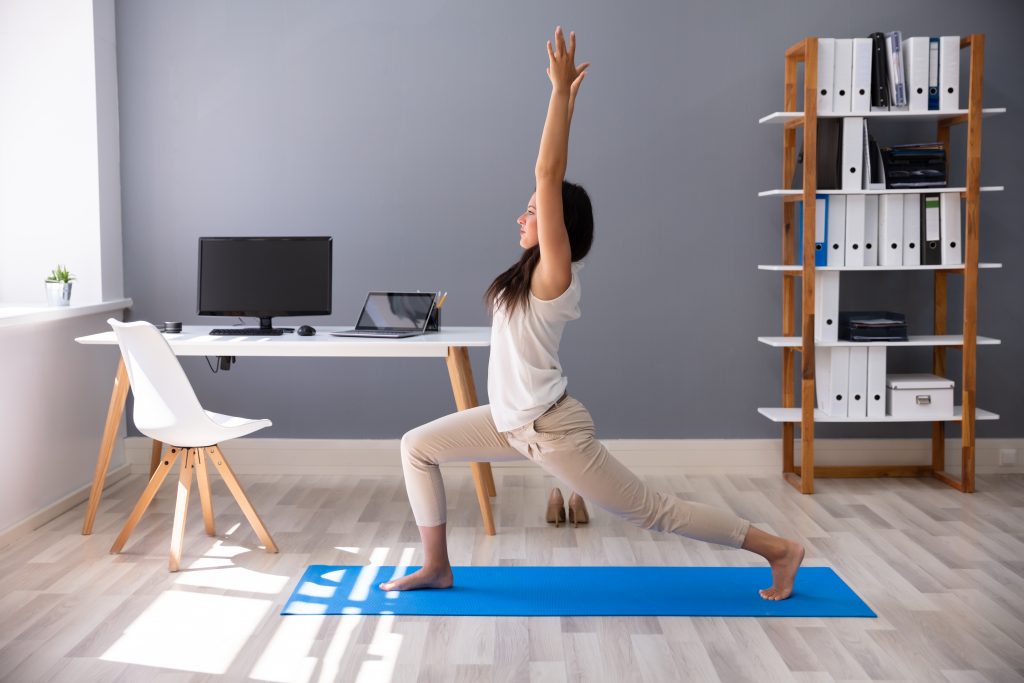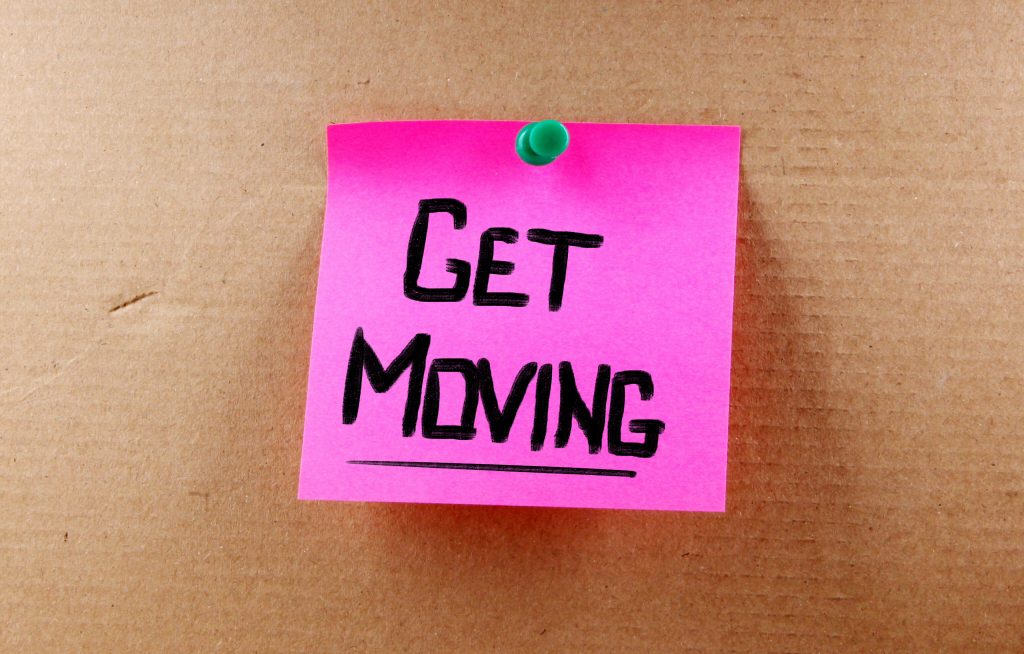Have you been less active since COVID-19 restrictions were implemented? Has working from home meant you are taking less steps and have increased your time spent sedentary? Increased sedentary behaviours can have severe effects on our health and performance, but what can we do to fix it?
First of all, what is Sedentary Behaviour?
Sedentary behaviour is defined as any seated, awake time with low energy expenditure. Sedentary behaviour has become a leading issue in recent years and is associated with adverse health conditions such as diabetes, cardiovascular disease, cancer and obesity (1). Many adults in the UK spend around 9 hours a day sitting which is maybe unsurprising as it is estimated that 80% of jobs are now sedentary. Additional to spending most of the day seated for work, sedentary behaviour can also include watching TV, using a computer, reading, doing homework, or travelling.
Whilst the extent of sedentary behaviour is still undetermined, research suggests increased sedentary time can have a detrimental effect on cognitive performance and physiological wellbeing. Sedentary behaviours can negatively influence mental health, including increased risk of anxiety, depression, and lower levels of emotional wellbeing (3). Accumulating large amounts of sedentary time has also been linked with sleep disorders. Unfortunately, there is still insufficient evidence to determine a specific time limit or maximum sedentary time recommendation.
 Recent research suggests that adults who spent above 6 to 8 hours per day sedentary, are associated with greater risk of all-cause and cardiovascular disease, obesity and early mortality (2). What is more concerning is that current research indicates that even those who achieve the recommended amount of structured exercise each week can still experience the negative effects of an overall sedentary lifestyle.
Recent research suggests that adults who spent above 6 to 8 hours per day sedentary, are associated with greater risk of all-cause and cardiovascular disease, obesity and early mortality (2). What is more concerning is that current research indicates that even those who achieve the recommended amount of structured exercise each week can still experience the negative effects of an overall sedentary lifestyle.
As newer research emerges, we will continue to learn more about the long-term effects of sedentary behaviour. Earlier this year, the World Health Organisation (WHO) began the process of updating the 2010 Global Recommendations on Physical Activity for Health for young people and adults. This information and others like it, will be vital in providing clearer guidelines surrounding sedentary behaviour.
What are the factors that impact our increased sedentary behaviour?
Given the current situation and the restrictions that go alongside it, most people are taking fewer steps whilst working from home compared to when they were based in an office environment. Many now have no commute, no substantial walks from the desk to various workplace amenities, alongside an increase in the number of video calls, which require no change of location at all. So, it is quite common to see a reduction in steps and non-sedentary behaviour when compared to pre COVID-19 times. From data collected by the ART Health Solutions team over the past ten months, on average, those who moved from an office space to working from home have taken 19% fewer steps per day. Even with the end of the initial lockdown and the easing of certain restrictions, daily sedentary time is still 41 minutes higher than pre COVID-19 office-based working. This additional 41 minutes may not seem a lot, but it adds up to nearly an extra day per month spent sedentary! If flexible working and the ability to work from home are to remain, we need to be proactive in combating time spent sedentary. But our issue with increased sedentary behaviours has been around long before the impact of COVID-19. According to The American Heart Association, sedentary jobs have increased by 83% since 1950 and with that, comes many knock-on effects. This increase in desk-based jobs has obviously led to increased sedentary behaviours but more importantly, the office can often be a place that inhibits mobility and can undermine attempts to reduce sedentary time for the majority of employees.
Many employees believe taking breaks from their desk could be interpreted as “wasting time” or being “unproductive”. In many organisations there is a basic underlying premise that most productive work is desk-based and meeting-orientated. Therefore, there is clearly a strong need for internal action to be taken, that will allow employees to feel empowered to make their health and performance a priority through reduced sedentary behaviours. Data collected by the ART Health Solutions team reported higher performers (measured through our Omics cognition application) take more daily steps and spend less time sedentary in comparison to lower performers. This indicates that there may be a correlation between decreased sedentary time and improved cognitive performance.
Employers need to implement, not only measures that decrease sedentary time but that also develop a workspace culture that does not condemn desk breaks but in fact promotes them. This can work for both office-based work and while working from home. Employers need to be at the fore of normalising breaks from sedentary behaviour and to cut through the taboo that is leading to detrimental health effects within their employees.
 Employers and employees alike should no longer only praise the “dedicated”, who work through their lunch break or the “hard-working”, who stay long past the office has emptied. An increase in autonomous working could help reduce sedentary time and in turn improve employee health and cognitive performance. With current remote working, there is a vital need to develop long term habits that can reduce sedentary behaviours.
Employers and employees alike should no longer only praise the “dedicated”, who work through their lunch break or the “hard-working”, who stay long past the office has emptied. An increase in autonomous working could help reduce sedentary time and in turn improve employee health and cognitive performance. With current remote working, there is a vital need to develop long term habits that can reduce sedentary behaviours.
This can only be achieved by providing education to employers and employees alike and by providing internal support. Similarly, every employee needs to take responsibility for the way they spend their own time and understand the long-term impact of their daily behaviours.
But in the meantime, what can we do to reduce sedentary behaviours?
Sedentary behaviour does not have to be an irreversible way of life. Small changes incorporated into our day to day lives can help reduce negative health effects and promote a healthier lifestyle.
Here are some practical take-home tips:
- try not to skip your lunch break and wherever possible eat away from your desk
- set a reminder to get up and walk around every 30 or 60 minutes
- rotate between sitting and standing while working
- stretch and adjust positions while sitting at your desk
- stand or walk around while on phone calls
- take a quick walk every time you take a drink or toilet break
- limit TV time and swap for more active tasks or hobbies
- set attainable daily step or movement goals (that can be tracked on most smartphones)
References
1. Such, E. & Mutrie, N. (2017) Using organisational cultural theory to understand workplace interventions to reduce sedentary time. International Journal of Health Promotion and Education, 55:1, 18-29,
2. Patterson, R., McNamara et al. (2018) Sedentary behaviour and risk of all-cause, cardiovascular and cancer mortality, and incident type 2 diabetes: a systematic review and dose response meta-analysis. European Journal of Epidemiology;33(9):811-29.
3. Teychenne, M., Costigan, S. & Parker, K. (2015). The association between sedentary behaviour and risk of anxiety: a systematic review. BMC public health, 15(1), 1-8.

